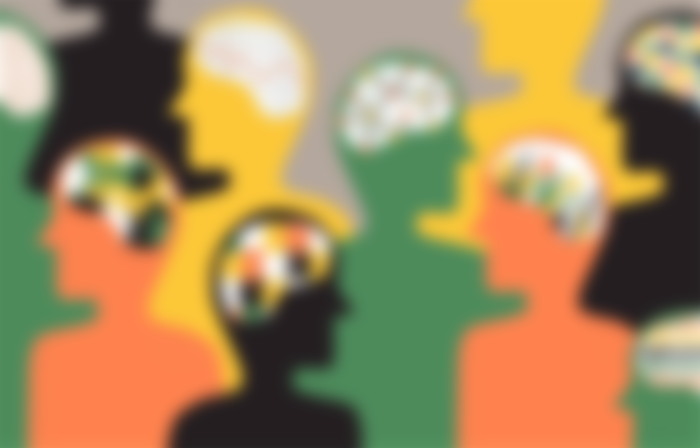Which of the Nine Types of Temperament Model are you closest to?
Although personality is mostly shaped by the communication, interaction and experiences with the environment since infancy, it also includes some innate tendencies. It is a general pattern of an individual's continuous thinking, feeling, behaving, interpersonal communication and relationship building characteristics. With a clearer definition, it can be said that personality represents the different characteristics of the individual and the behaviors he exhibits uniquely.
Temperament, also known as temperament, is the mental and physical change of certain emotional reactions, which are much more limited compared to personality, which are specific to the individual in daily routines. For example, it is the characteristics that vary according to the person, such as being quick to anger, bored, cheerful, active or inactive. In other words, temperament, which can be defined as a whole of human emotions and emotions, is only a part of personality.
The Nine Types of Temperament Model (NTTM) is one of the approaches where we can see the temperamental effect of personality. This approach, which deals with temperament types, shows that temperament types consist of some risky features that are open to both positive potentials and negativity.

The mental priority of the Nine Types of Temperament Model 1 is physicality. Positive potential characteristics of people in this category are serious, honest, mature, idealistic, fair, truthful, perfectionist, disciplined, hardworking, meticulous, orderly, principled, controlled, cool-blooded, rational, measured, calculating, obeying the rules, stable, responsible. They can be descriptive, planning, comparing, categorizing and systematic. Their risky features open to negativity are being moralistic, critical, judgmental, overly detailed, quick-tempered, and rigid.
Nine Types of Temperament Model 2 (NTM2), whose mental priority is emotionality, is loving, relationship-oriented, very emotional, expressive, warm, extroverted, sincere, talkative, sympathetic, strong communication skills, friendly, pitying, helpful, altruistic, giving. includes positive potentials such as The risky features that are open to negativity are that they can be easily affected, irritable, persistent, clingy, reproachful, likes to attract attention, jealous and manipulative.
The mental priority of the individuals in the Nine Types Temperament Model 3 (NTM3) category is emotionality and their positive potential is to be success-career oriented, competitive, focused on their goal, not hindering their negative emotions, popular, diplomatic, practical, adaptive, determined, hardworking and productive. Ambitious, status-seeking, self-seeking and cunning features are seen as risks open to negativity.
Nine Types of Temperament Model 4 (NTM4) gives place to emotional mental priority. While their positive potential features are being individual, original, extraordinary, empathetic, hypersensitive, designer, artistic, have an aesthetic point of view, seeking identity, sensitive, natural, sincere, friendly, compassionate, romantic, their risks open to negativity are rebellious, contradictory, They can be easily hurt, melancholic, passionate, envious individuals.
The mental priority of the Nine Types of Temperament Model 5 is intellectuality. Positive potential traits are that they can be introverted, quiet, observant, analytical, deeply curious, rational, objective, researcher, abstractionist, conceptualizer, specialist, archivist. The risks open to negativity are that they can be asocial, suspicious, cold, distant, emotionless, stingy.
Nine Types of Temperament Model 6 (NTM6), whose mental priority is intellectuality, is trust and safety oriented, team player, attaches importance to loyalty, curious, stores data, does not show its color, does not stand out, is cautious, thrifty, meticulous, organized, observing all possibilities, secretive / While it contains positive potentials such as keeping secrets, it can also include anxious, anxious, needing authority, paranoid, touchy, pessimistic, insecure, calculating, indecisive, unsure, suspicious, obsessive, controlling features.
The mental priority of the Nine Types of Temperament Model 7 is intellectuality. Potential positive features are that they can be individuals who are open to innovation, curious to explore, active, sociable, extroverted, quick to relate, talkative, experiential, visionary, innovative, dreamy, cheerful, optimistic, practical, quick to associate, and seek excitement. Their negative traits are that they avoid boredom, are disorganized, extravagant, exaggerating, impatient, bored easily, uncalculated, impulsive, distracted, greedy, and have flight of ideas.
Nine Types of Temperament Model 8 (NTM8), which mentally prioritizes physicality, can include positive traits such as leader, confident, courageous, generous, patronizing, challenging, challenging, straightforward, enterprising, quick to act, clear, and durable. Being domineering, oppressive, authoritarian, harsh, intrusive, intolerant, angry, belligerent, and violent are among the characteristics that can pose a risk.

Finally, the mental priority of the Nine Types of Temperament Model 9 is physicality. It is a positive potential for them to be calm, harmonious, peaceful, mediator, mild, peaceful, non-judgmental, integrative, avoiding conflict, soft, flexible, patient, routine-loving and letting go. Risky traits that are open to negativity are slow-blooded, passive-resilient, having difficulty saying no, not being involved, suppressing their anger, procrastinating, and being shy.
In all temperament models, positive and negative features have 3 levels. Although the "self-confidence" feature is in the positive potential category in the temperament model, if an individual experiences this feature more than necessary, we can say that it is an unhealthy feature. Or, if a person who cares about trust and loyalty can trust both his environment and himself and at the same time be accepting and forgiving in the face of insecurity and infidelity, this person is at the maturity level in this feature. If the same person tests the reliability of those around him, but can trust temporarily, even if it is difficult, this is the normal level. But if the person is always insecure and suspicious of himself and his environment, this level is unhealthy.
As the features in the unhealthy category are mostly acquired from childhood, as mentioned at the beginning of the article, they can harm the individual psychologically after a while and therefore cause personality disorders.

